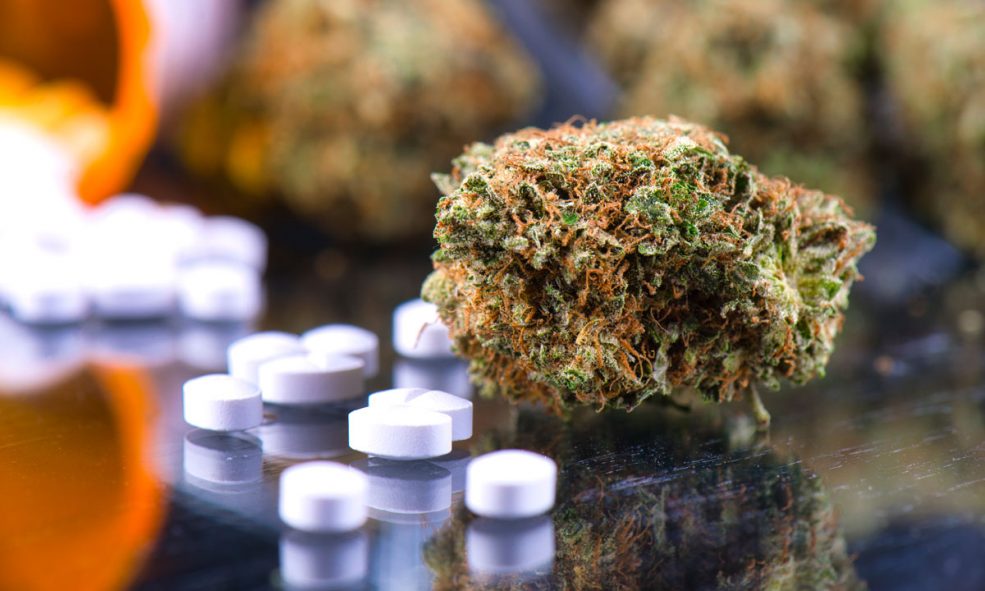The next revolution in medical marijuana may have nothing to do with cannabinoids. Instead we’re talking about flavonoids, which scientists have known for almost 40 years possess an anti-inflammatory property more powerful than aspirin. But only due to Canada’s legalization of marijuana have researchers been able to dig into these cannabis properties with the proper rigor befitting modern science.
Flavonoids can be found in many plants and contribute to their color pigmentation. They aren’t just to make flowers and fruit look pretty, though. The created by flavonoids serves to protect various plants from harmful UV rays and diseases, while also attracting different bugs to provide pollination.
RELATED: Here’s Why Cannabis Juicing Can Be Good For You
This isn’t the only role brought by flavonoids, as they introduce other enriching characteristics to the plant—like the antioxidant quality you find in many superfoods. But some flavonoids only exist in the cannabis plants and we call those cannaflavins. Thanks to Canadian researchers, there is newfound interest in cannaflavins’ ability as a potent anti-inflammatory. Cannaflavin A and Cannaflavin B could be 30 times more powerful than aspirin, reports The Toronto Star.
These cannaflavins also don’t hold the consequences medical professionals usually associate with over-the-counter anti-inflammatories for an extended time. That healing property in cannaflavins was first found back in 1980 by scientists at the University of London. But there lies an important caveat to cannaflavins’ abilities.

“This is very typical of many natural products that have therapeutic value,” Tariq Akhtar, an assistant professor at the University of Guelph’s department of molecular and cellular biology, told the Star. “And you can’t just grow fields and fields of the plant and expect to get enough of the bioactive compound out of them, because they’re in such low amounts and, since they’re complex chemicals, they’re hard to get at. Extracting and purifying them is possible, but it’s not economically viable.”
So no, consuming a bunch of cannabis won’t help you get the magical healing abilities of cannaflavins. But Akhtar and his team have developed and patented a new technique that can identify the genes responsible for Cannaflavins A and B, so they metabolically engineer those properties without having to produce a whole bunch of cannabis.
RELATED: How Black Pepper Sedates Marijuana Paranoia, According To Neil Young And Science
“What’s interesting about the molecules in cannabis is that they actually stop inflammation at the source,” Akhtar told the Star. “And most natural products don’t have the toxicity that’s associated with over-the-counter pain relief drugs, which, even though they’re very effective, do come with health risks. So, looking at natural products as an alternative is a very attractive model.”
But again, none of this would’ve been possible without legalization. The previous research that identified marijuana’s flavonoids was halted due to prohibition. It serves as another reminder why the work by activists is so vital to unlocking the true potential of the plant.
“We wouldn’t have been able to do this if it wasn’t for the climate right now in this country really pushing people like us to do this research,” Akhtar said. “There’s a lot more research that has to happen and I think working in Canada right now, at a time when our government has been really supportive of this agenda and there’s a lot of industrial and financial support available to actually research this plant, makes for really exciting times.”


